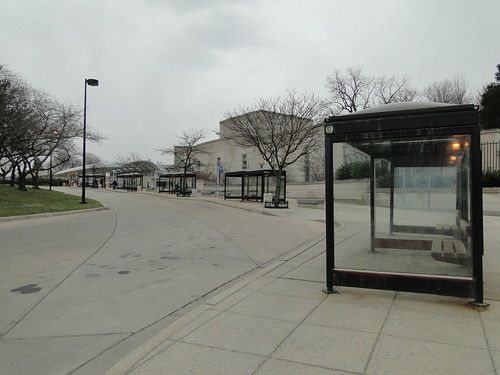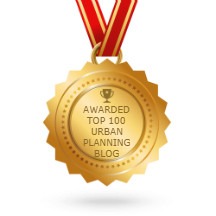Revisiting assistance programs to get people biking: 1826 programs
I have always been big on differentiation in analyzing places and programs, but lately I've become aware that I may not be as thorough as I could be.
I've written hundreds of blog entries about bicycling and how to promote it as a real form of transportation, focused on but not limited to DC, which is a perfect city for it.
A big point I make with bicycling is that given the automobile dependency that's been fostered on the US given the predominate land use and transportation development paradigm, is that people have to be assisted in making the shift from driving to mostly bicycling.
Building infrastructure isn't enough. Even great infrastructure can be empty much of the time. If anything, that's an indicator that people need help to make the change.
Granted for "biking most of the time" a lot of conditions have to be congruent including distance from origin to destination, topography, weather.
I have a piece, "Revisiting assistance programs to get people biking: 18 programs," and speaking of differentiation what I realize it that it should be organized in terms of mass/district/place based supports versus what we might call individualized and personal biking.
An example might be living in Capitol Hill, DC and riding around on various errands, trips to work, for recreation etc., within your neighborhood, versus living 4.5 miles direct to the University of Maryland.
Similarly, Capitol Hill has dozens of bike sharing stations, while the route from Takoma Park to University of Maryland does not. In Manor Park, there are few bike sharing stations, so having your own bike makes the most sense.
==========
That entry updates "Revisiting assistance programs to get people biking: 18 programs," with the addition of more programs, which I have included below, marked by an asterisk, but without adding much in the way of additional text.
This post is written in advance of the next post.
Mass/Place/District
1. Creating "sustainable mobility stores." Relatedly providing support and subsidies to bicycle shops.
3. Cycling training
9. Bike sharing programs ought to be an obvious opportunity for promoting cycling take up.
10. Discounted bike sharing memberships on a means-tested basis.
12. Campus specific bike share programs.
Ciclavia in December 2014. Los Angeles Times photo.19.** Open Streets Programs/Community Cycling Promotion programs at the neighborhood and community scale, including promotion of biking through affinity groups. I've written about both a lot but somehow neglected to include this item in this entry.
Neighborhood and district rides at one scale, whole community rides at the others. I am always amazed to see photos of such events and say "where did all the bikes come from?"
20.** Electric bike discount programs. This has the advantage of "expanding" the size of a district a person is willing to bike it. Plus may shift people in significant ways from cars.
21.** Free bicycle share trips to extend transit trips to reaching your final destination. Columbia SC (bus) transit does this, as does Bogota.
23.** Bike bus programs. Most used in conjunction with "bike to school programs" ("I Started a Bike Bus, and You Can Too," Wired, 8 routes for the Montclair Bike Bus in New Jersey, "A cool way to get kids to school -- the bike bus" Boston Globe, ""‘It’s a bit of freedom’: traffic-stopping tech helps Glasgow school’s bike bus on its way"," Guardian).
Bike bus in Brooklyn. Video at Reddit.
25.** Expansion and Improvement of Trails. I didn't realize until I rode a trail for some distance while mostly being a street rider, how much mental energy is spent while street riding on safety measures and defensive cycling. Separation from cars encourages more people to bike. And it lets you "loosen" the mental load.
26.** Bike (sustainable mobility) Festivals. I've written about college bike weeks and the Bike Rodeo that used to be sponsored by Utah Transit Authority. Sometimes an Open Streets program includes many of these features. Obviously it's a way to get people consider sustainable mobility.
More recently, Washington Area Bicyclists Association has sponsored such events for seniors specifically ("Older adult transportation block party").
Individually-focused
1. Creating "sustainable mobility stores". Relatedly providing support and subsidies to bicycle shops.
2. Cycle Borrowing programs.
3. Cycling training
4. Bike safety training for children AND YOUTH.
5. Integrating cycling promotion programs into public recreation centers.
6. Other demographic focused cycling initiatives.
7. Senior cycling promotion programs.
8. Bikes as tools for improving access to jobs.
11. Cycle access programs on college campuses and by large employers.
13. Employer and college-assisted buying programs.
14. Credit union loans to buy bikes.
15. Bike donations for children.
16. Bike bundling programs in public housing.
17. Donating abandoned and unclaimed bikes to programs serving low income populations.
18. Short term on-site bicycle provision.
19.** Open Streets Programs/Community Cycling Promotion programs at the neighborhood and community scale, including promotion of biking through affinity groups. I've written about both a lot but somehow neglected to include this item in this entry.
Neighborhood and district rides at one scale, whole community rides at the others. I am always amazed to see photos of such events and say "where did all the bikes come from?" This item is listed in this section more for affinity groups and community rides.
20.** Electric bike discount programs. This has the advantage of "expanding" the size of a district a person is willing to bike it. Plus may shift people in significant ways from cars.
22.** Secure bicycle parking systems at the city and metropolitan scale ("Another mention of the idea of creating a network of metropolitan scale secure bicycle parking facilities"). Again something I write about a lot that should be integrated into this list.
24.** Provision of bike lockers and showers in destination districts. Zoning requirements to build them in office buildings and campuses of a certain size.
25.** Expansion and Improvement of Trails. I didn't realize until I rode a trail for a distance, how much mental energy is spent while street riding on safety measures and defensive cycling. Separation from cars encourages more people to bike.
26.** Bike (sustainable mobility) Festivals. I've written about college bike weeks and the Bike Rodeo that used to be sponsored by Utah Transit Authority. Sometimes an Open Streets program includes many of these features. Obviously it's a way to get people consider sustainable mobility.
More recently, Washington Area Bicyclists Association has sponsored such events for seniors specifically ("Older adult transportation block party").
Labels: bicycle and pedestrian planning, car culture and automobility, change-innovation-transformation, low income households, social marketing, sustainable transportation, transportation planning














.jpg)
















.jpg)



.jpg)

.jpg)




.jpg)

.jpg)


